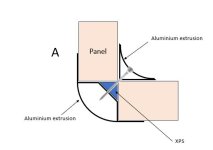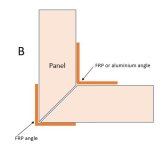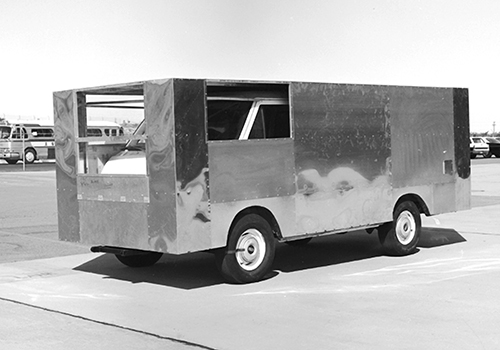I'm in the early stages of planning a small DIY flatbed pop-up camper for a Tacoma.
I started looking at composite, then checked out aluminum constructions, self-made fiberglass, and everything in between....just to come back to composite. I'm a metal guy, so it took me a while to swallow this...but I think composite is just the best option.
I'm a metal guy, so it took me a while to swallow this...but I think composite is just the best option. 
At the moment, I'm reflecting on how to join the composite panels. I'm aware of the concerns and possible drawbacks of aluminum in this construction but there are a few practical advantages. I have these 2 possibilities on the table. 'A' is much easier to work with and not very costly. 'B' might be better because panels and FRP will contract/expand the same way and have less thermal transfer, but it will be more work and cost more. Companies have been building campers and commercial vehicles using method 'A' (without the XPS corner) for many years and it seems to work well.
Has anybody used either of these methods? Any other ideas? There might be other options available, but this is what is available to me (Canada)
...or maybe I'm missing other options?


I started looking at composite, then checked out aluminum constructions, self-made fiberglass, and everything in between....just to come back to composite.
At the moment, I'm reflecting on how to join the composite panels. I'm aware of the concerns and possible drawbacks of aluminum in this construction but there are a few practical advantages. I have these 2 possibilities on the table. 'A' is much easier to work with and not very costly. 'B' might be better because panels and FRP will contract/expand the same way and have less thermal transfer, but it will be more work and cost more. Companies have been building campers and commercial vehicles using method 'A' (without the XPS corner) for many years and it seems to work well.
Has anybody used either of these methods? Any other ideas? There might be other options available, but this is what is available to me (Canada)
...or maybe I'm missing other options?





